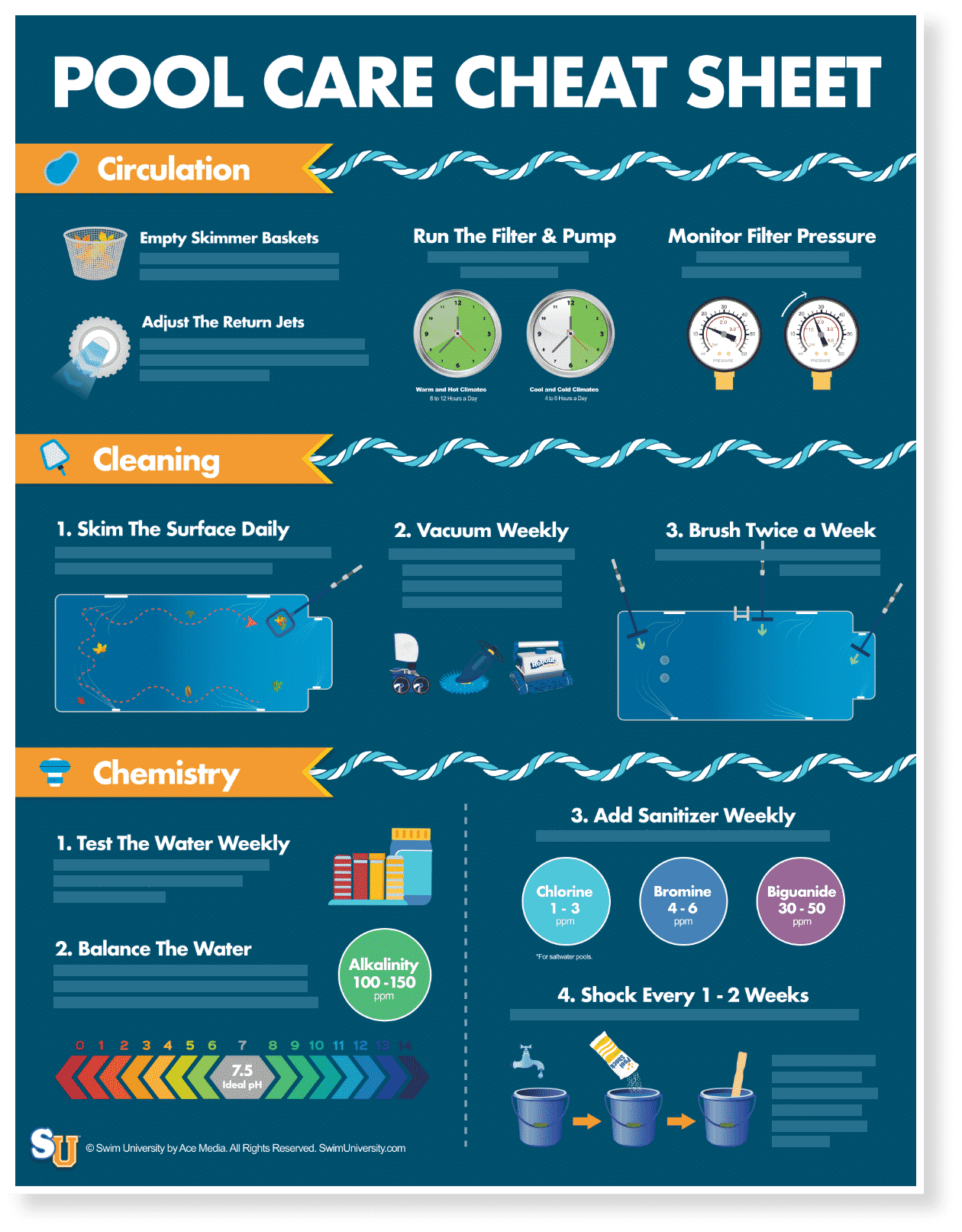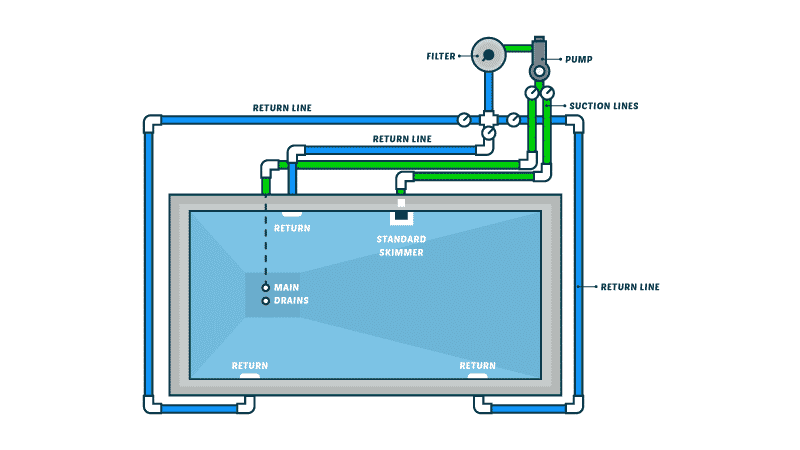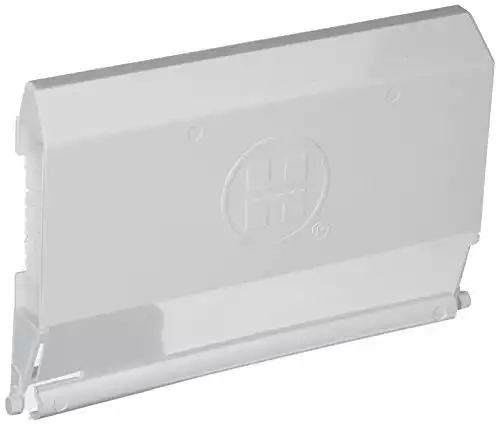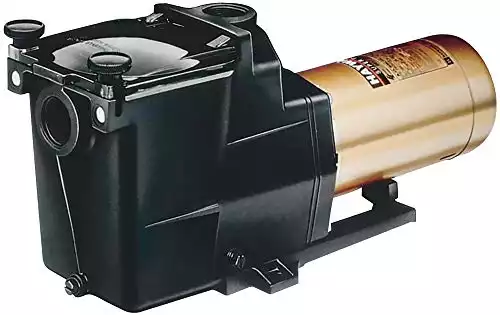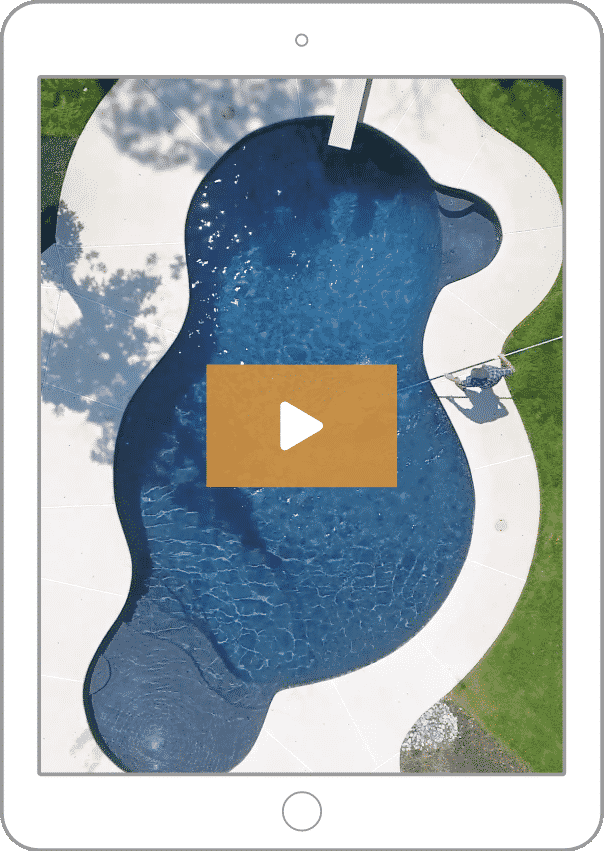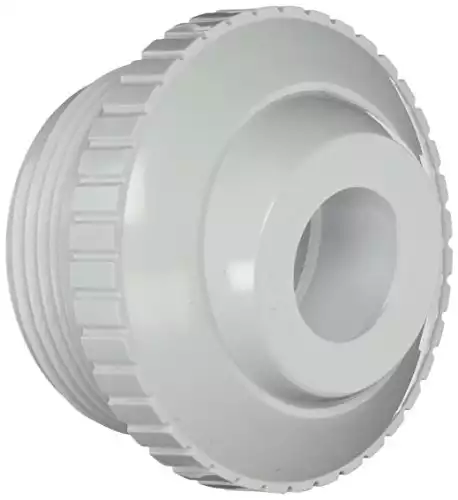Do you know how your pool works? How it really works? Sure, you see the pump and the filter, and you balance the chemistry. But for the most part, you probably enjoy your pool without giving any thought to the pool plumbing that makes that enjoyment possible.
Educating yourself about every part of your pool—even the parts you don’t see—can help you take better care of it, and can save you money in repairs.
The Importance of Pool Plumbing
It can be easy to forget about the pool parts you never see, including the pool plumbing. The pipes underground, the parts hidden behind the pool walls, and even parts submerged in the deep end that you never see unless you’re diving for quarters.
The plumbing is just one part of your pool’s anatomy, but an extremely important part. It’s just as important as the human body’s heart and circulation system. Without them, nothing else works.
Swimming Pool Plumbing Diagram
It’s one thing to learn the names of your pool’s parts. Learning where they’re all located and how they connect to each other will give you an even better understanding of how your pool plumbing works. That, in turn, will help you know how to care for your pool better.
The next step is to learn the role each part plays in your pool’s circulation and health.
Pool Plumbing Components
No part of a pool circulation system is any more important than another. They all do something different, and all play a critical role in keeping water moving into and out of your pool to help keep it clean, healthy, and swimmable.
Skimmer
This is a space on the inner wall of your pool where water enters the pool plumbing system. Your pool may have more than one skimmer, depending on its size.
Inside the skimmer is a basket that collects larger debris like leaves, twigs, and bugs from entering the plumbing lines.
A skimmer will sometimes have a door—called a weir or floating weir—that is pushed inward when water passes through it. Otherwise, it stays shut to help keep debris from collecting in the skimmer basket and getting into the plumbing.
Suction Lines
Once the water has passed through the skimmer basked, it enters a suction line. This is basically a plumbing pipe, usually made from PVC. The entry point is connected to the skimmer, and the endpoint is connected to the pump.
Pump
Pool water doesn’t just move through the suction lines on its own. When the pool pump is on, it creates suction power, which moves water through the suction line, drawing it from the skimmer into the pump.
Think of the pump as the heart of your pool. It draws water in and then expels it into the filter through a continuation of the suction line.
Important: One of the worst things for a pool pump is for it to run dry. It’s made to have water in it, and when the water is either too low or not present at all, the pump can be damaged. The best way to avoid this is to ensure your pool’s water level is high enough to continually enter the skimmer, while also not completely covering the skimmer.
Filter
Pool water leaves the pump and enters the filter to be cleaned. Depending on the type of pool filter you have, it may remove everything from larger debris like leaf litter and bugs to hair and bacteria.
Return Lines
Now that the water is clean, it can go back into the pool through the return lines. Again, these are simply pipes made of PVC that extend from the filter to the pool returns.
Frustrated by adding chemicals and trying to keep your pool clear all the time?
We cut out all the confusion of pool maintenance in this easy-to-read illustrated ebook and video course. It'll help you save $100 right away on pool care!
Click Here to Learn MoreReturn
You may have also heard these called jets or return jets. They’re small openings around the pool wall through which the now-cleaned water reenters the pool. You’ll want the wall returns facing in such a way that they continually circulate the pool water.
For example, imagine standing on one side of your pool, the shallow end to your left, the deep end to your right. Let’s say the returns are on the wall opposite you, and the skimmer is on the side where you’re standing.
You’d point all the wall jets to the right, toward the deep end. This would move the water in one direction, and force it around to the skimmer, creating literal pool circulation.
The return jets in the shallow end should each face a different direction to keep water from stagnating over the steps.
Main Drain
Every inground pool has a main drain at the bottom of the deep end. Depending on the size of your pool, there may be more than one main drain.
Important: It’s never a good idea to completely drain your pool. Removing the water pressure from the pool walls can cause all kinds of damage, from cracking to the entire pool literally popping out of the ground.
If your pool needs to be drained for cleaning, repair, or painting, we highly recommend consulting a professional to avoid damaging or ruining your pool.
Water
Bet you didn’t think about this, did you? But it’s true. Water is an essential part of every pool plumbing system. Without it, the pump won’t work properly, the filter will dry out, and you’ll break something when you try to dive into the deep end.
Seriously, keeping the right amount of water in your pool is essential for the plumbing system to function properly.
When the weather’s hot, watch for the water the level to decrease due to evaporation. When it’s rainy, watch for the level to increase to the point where it covers the skimmers and interferes with the plumbing and circulation.
And always remember that the water isn’t just what you swim in. It’s a big part of what keeps your pool and all its equipment and systems running smoothly.
You’ve Cracked the Pool Plumbing Code!
Properly caring for your pool entails a lot more than just testing the water and adding chemicals. Keeping your pool plumbing system in mind will help you maintain your clean, sparkling pool, and extend your equipment’s longevity.
Happy Swimming!

Recommended Guides
Managing your pool's circulation is a matter of understanding the different types of pool valves, and then properly using them at the right times.
A clean, cared-for pool is already beautiful. But why not add a little pizzazz with a couple of pool fountains? Your pool will be cooler, and so will you.
Well, 24 hours a day would be ideal. But there's a better answer to how long to run a pool pump, and it won't make your electric bill skyrocket.
When's the last time you thought about your pool skimmers? Give them their due because they're one of the most important parts of your pool and its health.
